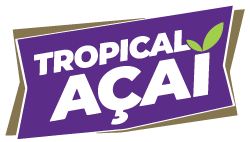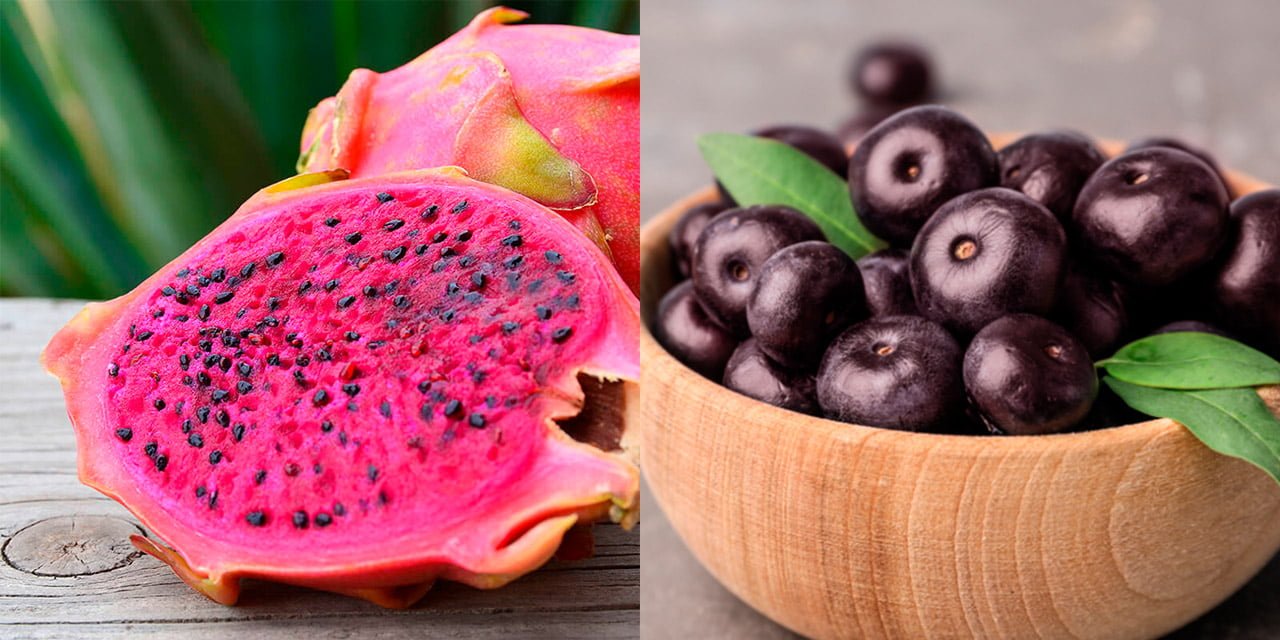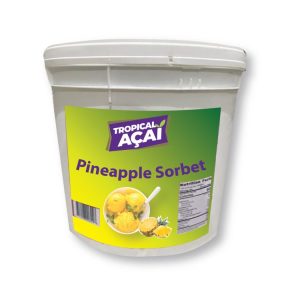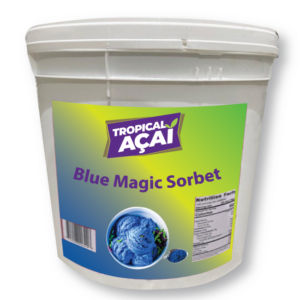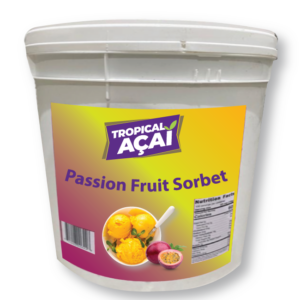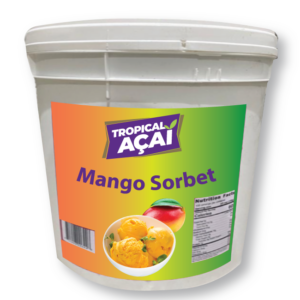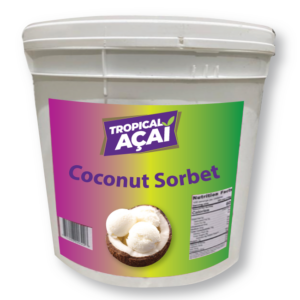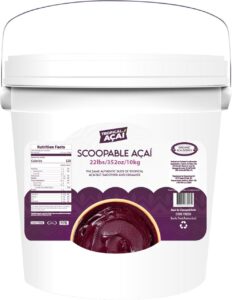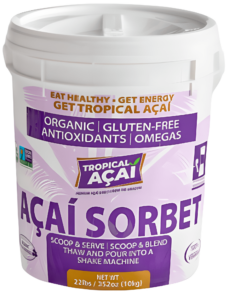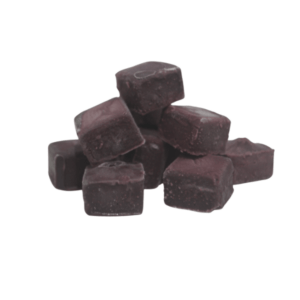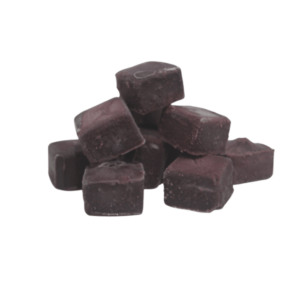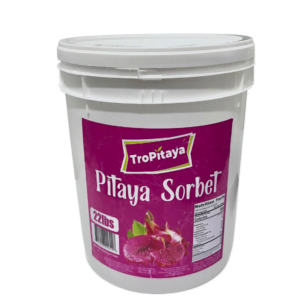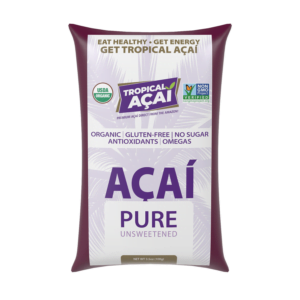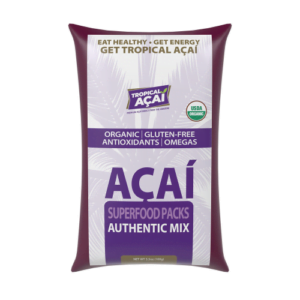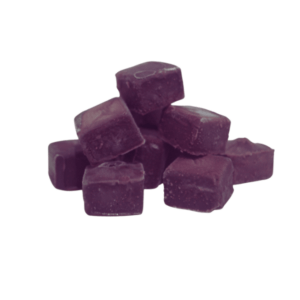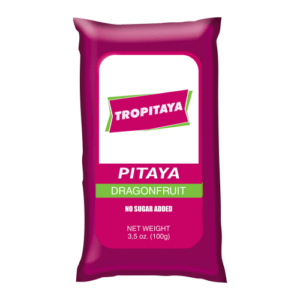Pitaya and acai bowls are popular, colorful, and nutrient-dense breakfast options. Both are packed with antioxidants, vitamins, and minerals, but is one healthier than the other? In this article, we’ll compare the nutritional values of Pitaya and Acai and see which one will come out on top.
Pitaya vs. Acai: What Are They?
Pitaya, also known as dragon fruit, is a tropical fruit with a bright pink or yellow exterior and a white or pink interior dotted with black seeds. It’s low in calories and fiber and rich in vitamin C, calcium, and iron. In addition, Pitaya has a mild, slightly sweet taste and a refreshing texture, making it a popular addition to smoothies, bowls, and salads.
Acai, on the other hand, is a dark purple berry that grows in the Amazon rainforest. It’s been touted as a superfood due to its high antioxidant content, which helps fight inflammation and protect against chronic diseases. Acai is also high in fiber, healthy fats, and anthocyanins, a type of flavonoid that gives the fruit its signature color. Acai has a slightly tart, berry-like flavor and creamy texture, making it a popular base for smoothie bowls and desserts.
Nutritional Comparison: Pitaya vs. Acai
Acai:
- Calories: 70 per 100 grams
- Fat: 5 grams per 100 grams (primarily healthy unsaturated fats)
- Carbohydrates: 4 grams per 100 grams
- Fiber: 2 grams per 100 grams
- Sugar: 2 grams per 100 grams
- Protein: 1 gram per 100 grams
- Vitamin A: 15% of the RDI per 100 grams
- Calcium: 2% of the RDI per 100 grams
- Iron: 4% of the RDI per 100 grams
- Vitamin C: 10% of the RDI per 100 grams
Pitaya (Dragonfruit):
- Calories: 60 per 100 grams
- Fat: 0.4 grams per 100 grams
- Carbohydrates: 13 grams per 100 grams
- Fiber: 3 grams per 100 grams
- Sugar: 9 grams per 100 grams
- Protein: 1 gram per 100 grams
- Vitamin A: 1% of the RDI per 100 grams
- Calcium: 1% of the RDI per 100 grams
- Iron: 1% of the RDI per 100 grams
- Vitamin C: 34% of the RDI per 100 grams
Both acai and pitaya are considered to be superfoods due to their high nutrient content. However, when comparing their nutrition facts, acai has more fat and fewer carbohydrates than pitaya, while pitaya has more fiber, sugar, and vitamin C than acai.
Overall, both fruits can be a healthy addition to a balanced diet. However, pitaya might be the better choice if you’re looking for a fruit with high fiber and vitamin C content. On the other hand, acai may be a good option if you’re looking for a fruit with more healthy fats.
Calories and Macronutrients
When it comes to calories, Pitaya and Acai are relatively similar. A typical 100-gram serving of Pitaya contains around 60 calories, while the same amount of Acai has about 70 calories. This is because both fruits are low in fat and fiber, with Pitaya providing around 1 gram of fiber per serving and Acai providing about 3 grams of fiber per serving.
However, Acai is higher in healthy fats, mainly monounsaturated and polyunsaturated fats, which can help reduce inflammation and improve heart health. Acai also contains some protein, while Pitaya is virtually protein-free.
In addition to their calorie content, Pitaya and Acai also differ in their macronutrient composition. While Pitaya is low in fat and fiber, providing only 1 gram of fiber per serving, Acai contains higher amounts of healthy fats, specifically monounsaturated and polyunsaturated fats.
These fats have been shown to have anti-inflammatory properties and can contribute to improved heart health. Furthermore, Acai also contains some protein, whereas Pitaya is virtually devoid of protein.
Vitamins and Minerals
Both Pitaya and Acai are rich in vitamins and minerals but differ in the amounts and types of nutrients they provide. Pitaya is exceptionally high in vitamin C, providing around 34% of the daily value per serving. It’s also a good source of calcium, providing about 6% of the daily value per serving, and iron, providing around 4% per serving.
On the other hand, Acai is exceptionally high in vitamin A, providing around 15% of the daily value per serving. It’s also a good source of calcium, providing about 4% of the daily value per serving, and potassium, providing around 4% per serving.
Pitaya and Acai also differ in their antioxidant content. Pitaya is rich in antioxidants such as betalains, which give it its vibrant pink color. These antioxidants help protect the body against oxidative stress and may have anti-inflammatory properties.
Acai, on the other hand, is known for its high levels of anthocyanins, which are powerful antioxidants that give it its deep purple color. These antioxidants have been linked to various health benefits, including improved heart health and reduced inflammation. So, while both Pitaya and Acai offer a range of vitamins and minerals, they also provide unique antioxidant profiles that contribute to their overall health benefits.
Antioxidants
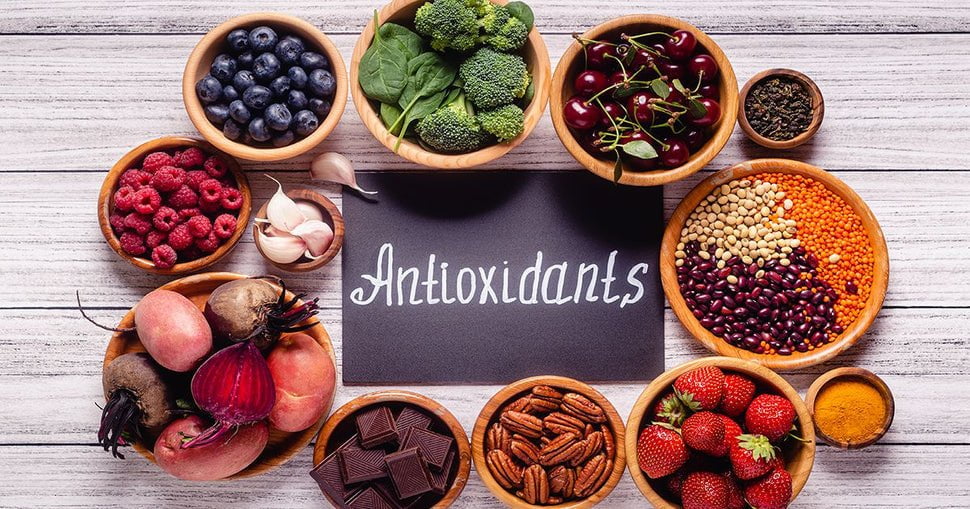
Both Pitaya and Acai are rich in antioxidants, which help protect against oxidative stress and inflammation. For example, Pitaya contains high levels of betacyanins, an antioxidant that gives the fruit its vibrant color. Acai, meanwhile, contains high levels of anthocyanins, a type of antioxidant linked to numerous health benefits, including reduced inflammation and improved brain function.
Pitaya Bowl vs. Acai Bowl: Which is Better?
Now that we’ve compared the nutritional values of Pitaya and Acai let’s compare the popular bowls made from these fruits. A pitaya bowl typically consists of blended Pitaya, banana, and other fruits, topped with granola, nuts, and coconut flakes. An acai bowl is made from blended Acai, banana, and other fruits, with granola, nuts, and honey.
Both bowls can be nutritious and satisfying breakfast options, but it’s essential to consider the added ingredients and toppings. Granola and honey, for example, can add extra sugar and calories to the bowls, while nuts and coconut flakes can provide healthy fats and protein.
It would be best to consider your nutritional needs and preferences when choosing between a pitaya bowl and an acai bowl. For example, a dragoinfruit bowl may be better if you’re looking for a high-fiber, low-fat option. On the other hand, if you’re looking for a high-antioxidant, high-fat opportunity, an acai bowl may be a better choice.
Conclusion
In conclusion, Pitaya and Acai are nutrient-dense fruits with numerous health benefits. While they differ slightly in their nutritional values, both can be part of a healthy and balanced diet. However, when choosing between a pitaya bowl and an acai bowl, you must consider your nutritional needs and preferences and select toppings and ingredients that support your overall health goals.
So, is a pitaya bowl healthier than Acai? The answer is that it depends on your individual needs and preferences. Both fruits and their bowls can be nutritious and delicious additions to your breakfast routine.
When it comes to choosing between a pitaya bowl and an acai bowl, it’s important to consider the taste and texture as well. Pitaya has a slightly sweeter and milder flavor compared to acai, which has a rich and tart taste. If you prefer a more subtle and refreshing flavor, then a pitaya bowl might be the better choice for you. On the other hand, if you enjoy bold and tangy flavors, an acai bowl would be a great option.
Additionally, the texture of the bowls can also vary. Pitaya bowls tend to have a smoother consistency, while acai bowls have a thicker and creamier texture. Ultimately, the decision between a pitaya bowl and an acai bowl comes down to personal preference and what you enjoy the most. So go ahead and experiment with both options to find your favorite breakfast bowl!
